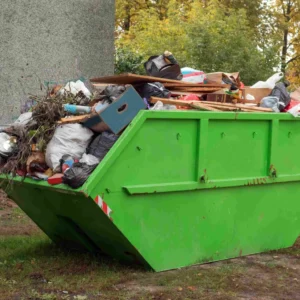

Imagine stepping into a garden that is not only visually stunning, but also a powerful testament to sustainability. According to the Environmental Protection Agency (EPA), an average American generates 4.5 pounds of trash every day. That totals nearly 1,600 pounds in a year. Think about the transformative impact if some of this waste could be repurposed to beautify our green spaces. Join on this journey to discover how the concept of zero waste marries garden aesthetics to truly make green spaces glow with pride.
Your Environmentally Friendly Garden Journey Begins
Begin your environmentally friendly journey towards garden design by developing an understanding and appreciation for the flow of materials through your space. This means exploring efficient waste removal methods in order to reduce, recycle, and repurpose waste in and around your garden. The adoption of such practices not only affirms your commitment towards a greener Earth, it also provides you with a sustainable way of enhancing your garden’s aesthetics.
The Essence of Zero Waste Gardening
The concept of zero waste gardening is an essential step towards creating stunning yet sustainable green spaces. It encourages the usage of every possible part of plant material that would otherwise be considered as waste. With this practice, you can transform basic yard trimmings into useful fertilizers or attractive mulch, contributing to both the health and beauty of your garden.
Turning Waste into Fertilizer
Composting is a simple way to convert fruit peels, vegetable scraps, coffee grounds, and even fallen leaves turning waste into nutrient-rich soil additives. By doing this, you not only remove these items from the rubbish bin but add value to your garden by giving back to the soil in a natural way.
Harvesting Rainwater
Harvesting rainwater can serve multiple purposes in your garden. Not only does it reduce reliance on municipal water, it also provides your plants with naturally soft, chlorine-free hydration. Moreover, creative rainwater collection systems can contribute to garden aesthetics by becoming a unique focal point in the landscape.
Gardening Tools: Repair instead of Discard
Well-worn tools are often hurriedly replaced and discarded. Consider giving them new life by repairing or refurbishing instead. Why not rehandle that old spade or reglaze that weather-beaten flower pot? With the right care, you can increase your tool’s lifespan while reducing waste.
Reduce Plastic Waste
A significant step to an eco-friendly garden is reducing plastic waste. Choose seeds over seedlings as they generally come in paper packaging opposed to plastic pots. If you prefer seedlings, opt for biodegradable pots or make your own using newspaper. Every effort towards limiting plastic waste contributes positively to your garden’s eco-credentials.
Integrated Pest Management
Reduce chemical waste by adopting integrated pest management. This involves using biological techniques like introducing natural predators into your garden to manage pests organically. This reduces the need for pesticides that often come in non-recyclable packaging, protecting both your garden and the environment.
Plant Selection Matters
Your choice of plant selection can greatly reduce waste. Opt for perennial plants which come back every year, reducing the need for annual replanting. Using local, native species not only saves on transportation and packaging but also benefits your local ecosystem by providing a habitat for wildlife.
Repurposing Household Items
Use your creativity to repurpose common household items into garden decorations or practical uses. For instance, transform an old basin into a bird bath or use wine corks as labels for your plants. Such unique elements create visual interest while illustrating your commitment to reducing waste.
Ditch Synthetic Fertilizers
Another way to make your garden more sustainable and less wasteful is by avoiding synthetic fertilizers. Strong emphasis should be placed on creating your own nutrient-rich compost. Homemade compost not only reduces waste but also nourishes your plants naturally.
Plant a Tree
Trees absorb carbon dioxide, one of the primary gases contributing to climate change. By planting even one tree in your garden, you are playing a part in reducing global waste while adding to your garden’s aesthetics – a true win-win.
Garden Sustainable Landscaping
Sustainable landscaping does not just conserve water, but also saves energy and reduces waste by keeping the ecosystem balanced. A layered plant community shelters wildlife, adds bio-diversity and creates an aesthetically pleasing green space.
Your Final Stretch
Moving toward a green space that is not only aesthetically pleasing but responsible requires commitment. But every step you take moves you closer to achieving this balance. The beauty of your garden can then be viewed as a triumph – not only for the eyes but for Mother Earth as well.
The post Making Green Spaces Glow: The Fusion of Garden Aesthetics and Waste Removal appeared first on Social Media Explorer.
* This article was originally published here
(” Learn How to Make Money With Affiliate Marketing – http://bit.ly/make_online_now “)
Comments are closed.